
INDEX | HEALING WISE | Q & A with SUSUN | GREEN BLESSINGS
THE LIBRARY | PEOPLE MAKING CHANGE | GODDESS ART GALLERY
Healing Wise ...
with Susun Weed
Healthy Bones The Wise Woman Way
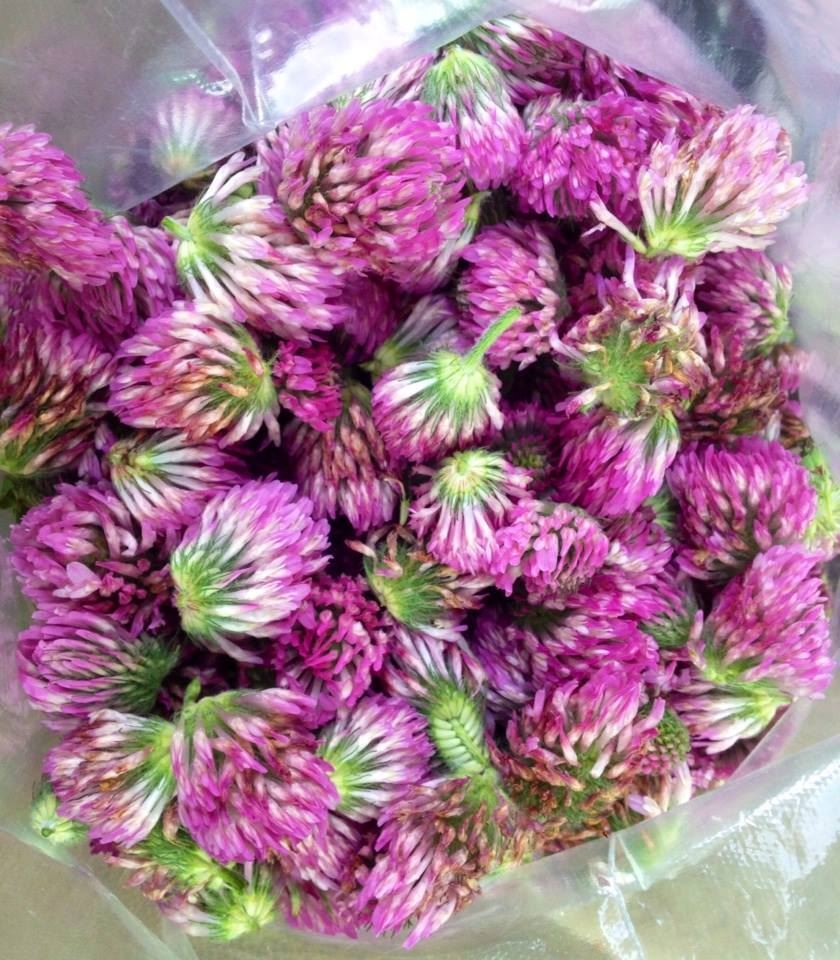
Every woman I know is concerned about osteoporosis. Frightening stories equate it with broken hips, bent spines, wheelchairs, and death--things we all want to avoid. What can we do? Should we take calcium supplements? hormones? Fosamax? Can we rely on our green allies?
The Wise Woman tradition maintains that simple lifestyle choices-- including, but not limited to, regular use of nourishing herbal infusions, medicinal herbal vinegars, yogurt, and seaweed -- are sufficient to preserve bone and prevent breaks. And, further, that these lifestyle choices produce multiple health benefits, including reduction of heart disease and breast cancer, without the problems and risks associated with taking hormones. As for supplements, as we will see, they do more harm than good.
Forget Osteoporosis
First, we must rid ourselves of the idea that osteoporosis is important. In the Wise Woman Tradition, we focus on the patient, not the problem. There are no diseases and no cures for diseases. When we focus on osteoporosis, we cannot see the whole woman. The more we focus on disease, even disease prevention, the less likely we are to know how to nourish health/wholeness/holiness.
In fact, focusing our attention narrowly on the prevention of osteoporosis actually increases the incidence of breast cancer. The postmenopausal women with the highest bone mass are the most likely to be diagnosed with breast cancer. Women who take estrogen replacement to prevent osteoporosis, even for as little as five years, increase their risk of breast cancer by twenty percent; if they take hormone replacement, the risk increases by forty percent.
These risks might be vindicated if we could show a correlation between bone density and bone breakage, but there isn't one. When I found myself at dinner last year (2000) with Susan Brown, director of the Osteoporosis Information Clearing House, I asked her to point me in the direction of any study that shows a clear relationship between osteoporosis and broken bones. She smiled. "There are none."
"In a recent study," she continued. "Researchers measured the bone density of people over 65 who had broken bones. Twenty-five percent had osteoporosis. Twenty-five percent had high bone density. And fifty percent had normal density." Notice that those with high bone density broke their hips as frequently as those with osteoporosis.
Get Flexible
If osteoporosis isn't the problem, what is it? In a word: inflexibility. Flexible bones bend; stiff bones break. This holds true even if the flexible bone is thin, even if the stiff bone is thick. Think of a piece of dead pine wood. Though it may be thick, it is brittle and breaks easily. Think of a green pine twig, even a small one is nearly impossible to break. Flexible bones, whether thick or thin, bend rather than break.
Flexibility is synonymous with health in the Wise Woman Tradition. It is created by nourishing and tonifying. Bone flexibility is created by nourishing the bones and tonifying the muscles around them. Tonifying is as important as nourishing, but because we are herbalists, let's focus on the benefits nourishing herbs offer to women who wish to have strong, flexible bones.
Nourishing Our Bones
Old age does not make weak bones. Poor nutrition makes weak bones.
What are bones made of? Like all tissues, they contain protein. They are rich in minerals, not just calcium, but also potassium, manganese, magnesium, silica, iron, zinc, selenium, boron, phosphorus, sulphur, chromium, and dozens of others. And in order to use those minerals, vitamin D must be present and the diet must contain high-quality fats.
Bones Need Protein
I have heard, and no doubt you have too, that animal protein leaches calcium from the bones. This is only half true. All protein, whether from meat, beans, soy, grains, or vegetables, uses calcium in digestion. Protein from soy is especially detrimental to bone health; soy is not only naturally deficient in calcium, it also directly interferes with calcium uptake in the bones. Traditional diets combine protein and calcium (e.g. seaweed with tofu, tortillas made from corn ground on limestone with beans, and melted cheese on a hamburger). Protein-rich herbs such as stinging nettle, oatstraw, red clover, and comfrey leaf provide plenty of calcium too, as do yogurt, cheese, and milk (which also provide the healthy fats needed to utilize the minerals). Limiting protein limits bone health. Increasing mineral-rich proteins increases bone health.
Bones Need High-Quality Fats
Hormones are kinds of fats, and cholesterol is the precursor to many of them. Post-menopausal bone problems do not, to my mind, arise from a lack of estrogen, but from a lack of fat. If the diet is deficient in good-quality fats, hormones will be produced in inadequate amounts. And vitamin D, a hormone-like vitamin, will not be utilized well. Further, mineral absorption is dependent on fats. A low-fat diet, in my opinion, makes it quite difficult to have healthy bones.
Bones Need Minerals
Bones do need calcium, and they are the last to get it, so our diets need to be very rich in this mineral. But to focus on calcium to the exclusion of other minerals leads to broken bones, for calcium is brittle and inflexible. Think of a piece of chalk, calcium carbonate, and how easily it breaks. A six-and-a-half year study of 10,000 white women over the age of 65 found that "Use of calcium supplements was associated with increased risk of hip and vertebral fracture; use of Tums TM antacid tablets was associated with increased risk of fractures of the proximal humerus." The other minerals found in bone lend it flexibility. When we get our calcium from herbs and foods (containing a multitude of minerals) we nourish healthy bones.
Extracting Minerals
From the Wise Woman perspective, the perfect way to maintain bone health, bone flexibility, and resistance to fracture is to use mineral-rich herbs and foods. Because minerals are bulky, and do not compact, we must consume generous amounts to make a difference in our health. Just as eating a teaspoon a carrots is laughable, so is taking mineral-rich herbs in capsule or tincture form. Because minerals are rocklike, we need to break open cell walls to get at them. Raw, fresh foods do not deliver minerals to our bodies.
To extract minerals, we need heat, time, and generous quantities of plant material. I prefer to extract minerals into water or vinegar. To make a nourishing herbal infusion, I pour one quart/liter boiling water over one ounce/30 grams of dried herb in a canning jar, covering it tightly, and letting it brew overnight. In the morning, I strain out the mineral-rich liquid and drink it -- over ice or heated, with honey or milk, mixed with black tea, seasoned with mint, spiked with rum, however you want it. You can drink the entire quart in one day, but do finish it within two.
My favorite nourishing herbal infusions are made from oatstraw (Avena sativa) or nettle (Urtica dioica) or red clover (Trifolium pratense) or comfrey leaves (Symphytum uplandica x). I sometimes add a little bit of aromatic herb such as peppermint (Mentha pipperata), lemon balm (Melissa off.), or bergamot (Monarda didyma) to change the flavor.
To extract minerals from fruits and vegetables, I cook them for long periods of time, or until there is color and texture change, evidence that the cell walls have been broken. Kale cooked for an hour delivers far more mineral to your bones than lightly steamed kale. Fresh juices contain virtually no minerals. Cooking maximizes the nutrients available to us, especially the minerals.
Herbs Are Mineral Powerhouses
Eating a cup of cooked greens every day is difficult, even for the most motivated woman. But drinking nourishing herbal infusions, eating seaweeds, and using medicinal herbal vinegars is easy. They are tasty, fun to prepare and use, and add a big nutritional plus with virtually no calories attached. Nourishing herbs and garden weeds are typically far richer in minerals than ordinary foodstuffs. Not only are nourishing herbs exceptional sources of minerals, their minerals are better at preventing bone breaks than supplements.
The ability of herbs to counter osteoporosis may be more complex than their richness of minerals, however. The minerals in green plants seem to be utilized more readily by the body and to be ideal for keeping bones healthy. Dr. Campbell, professor of Nutritional Biochemistry at Cornell University, has done extensive research in rural China where the lowest known fracture rates for mid-life and older women were found. He says, "The closer people get to a diet based on plant foods and leafy vegetables, the lower the rates of many diseases, including osteoporosis."
In Summation
My own experiences in helping women regain and maintain bone density and flexibility have led me to believe that lifestyle modifications work exceptionally well for motivated women who wish to avoid the risks and expense of long-term pill use. Nourishing herbal infusions, mineral-rich herbal vinegars, yogurt, and seaweed, combined with attention to tonification of the muscles, unfailingly increases bone density and creates flexible, healthy bones and women.
Green blessings to you all.
8 Keys to Healthy Bones
- Good nutrition for your mother while pregnant with you.
- Good nutrition for you during the formation of your bones.
- Monthly menses throughout your fertile years, especially before 30.
- Special attention to maintaining high levels of protein, fat, minerals, and vitamins from herbs and foods in your diet when menses cease during pregnancy, lactation, or after menopause.
- Regular rhythmical movement, the faster the better, daily.
- Consistent practice of yoga, tai chi, or any strengthening, opening, flexibility-building discipline.
- Chop wood, carry water.
- Eat yogurt.
Weed Walk with Susun
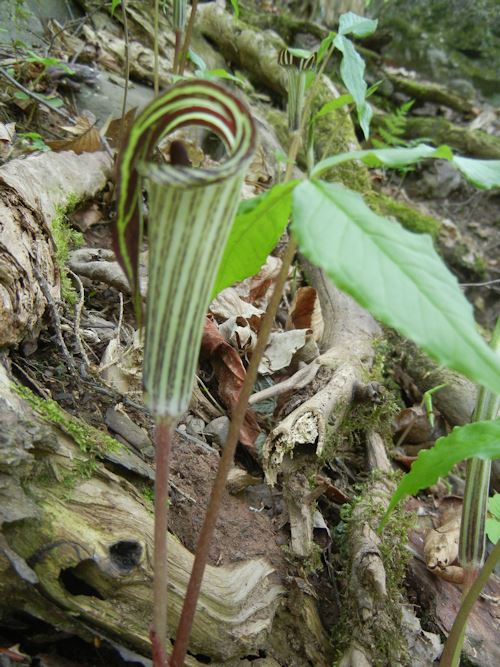
Jack/Jill in the pulpit (Ariseama atrorubens)
AKA Indian turnip, Dragonroot
There really are both Jacks and Jills in the spathe of this flower. Lift the lid carefully and see for yourself. All parts of the fresh plant are horribly irritating to the mucus surfaces of the digestive system, so this is considered a poisonous plant, though native people did use it for both food and medicine. Milk is the antidote should you decide to try it yourself. Protect this plant.
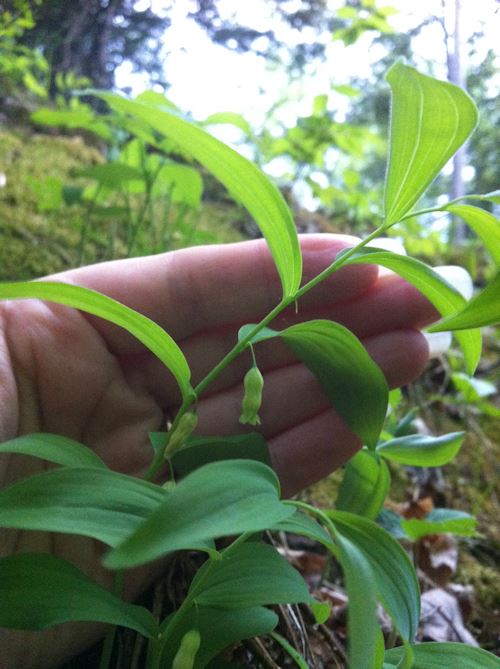
Solomon's seal (Polygonatum biflorum)
This is another plant now considered poisonous that native people used medicinally, though mostly externally. All varities (such as P. multiflorum) are considered interchangeable. A European variety (P. odoratum), which contains a constituent that lowers blood sugar, is still in regular use, especially in China. Protect this plant.
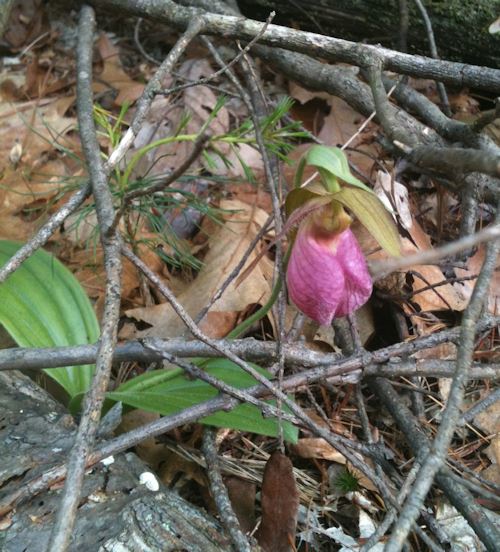 Lady's slipper orchid (Cypripedium pubescens) Lady's slipper orchid (Cypripedium pubescens)
AKA Moccasin flower
Protect this plant. The root of this prized orchid was formerly used is women's tonics to counter hysteria and headaches. Like most perennials of the forest, it is now in danger and modern herbalists use other plants (such as motherwort) to help women who are anxious and nervous. Protect this plant.
Herbal Adventures with Susun S Weed
Poke (Phytolacca americana)
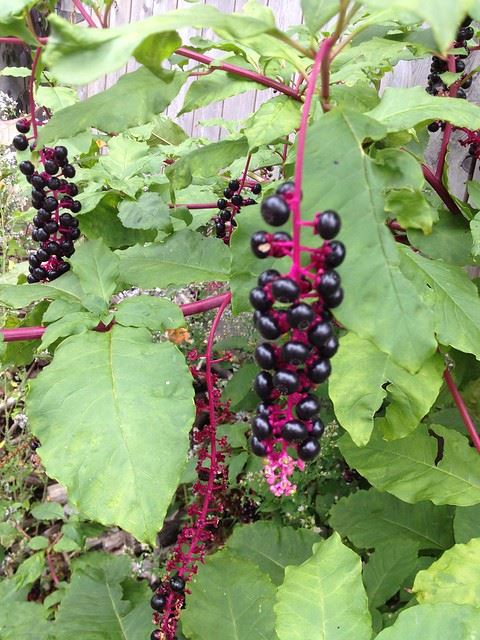
As you no may recall, I am astride a horse, riding through Provence, singing to the scotch broom, inhaling lavender, rosemary and thyme, drinking teas of elder blossom or linden flowers, swigging St. Joan's wort tincture, rubbing myself with Joan's wort oil, spraying myself with yarrow tincture, and hoarding my osha root in case there's an emergency. What else is in my herbal first-aid kit? With the abundance of herbs around me, what else did I bring to France? What herbs do I carry with me whenever I leave home?
Of the herbs in my herbal first-aid kit, osha is the rarest one I use. But poke is the most dangerous, and comfrey the most controversial.
Poke plants (Phytolacca americana) are large, showy perennials. Living as they do year after year, they accumulate a huge, spindle-shaped, root. In southern Virginia I once met an ancient poke plant whose root top was over two feet from one side to the other. The flashy, hot pink stalks, leaves that are big and smooth all over (edges too), and bunches of nearly black berries held at eye level make this weed easy to recognize and remember. All parts of the poke plant can be used: some for medicine, and some for food.
Yes, even though poke is considered a violent poisoner, people eat it. The leaves, cooked in several changes of water, are a specialty green below the Mason-Dixon line, where supermarkets carry canned poke sallet (or sallat). To make your own sallet: Collect very young poke greens as early as possible in the season (late April to mid-May in the Catskills, as early as February in Georgia). Pour boiling water over the greens and boil them one minute. Discard water. Add more boiling water and again boil the greens for one minute. Discard the water. Do this at least twice more before attempting to eat the greens. If you fail to leach out the poisonous compounds -- or are foolish enough to attempt to eat poke leaves raw -- your mouth and throat will feel like they are on fire, you may vomit, and you will no doubt have copious diarrhea.
Magenta is the color of crushed poke berries. Good for body paint, and great for ink. (Ammonia, used carefully, is the fixative.) The small seeds in the berries are very poisonous. Lucky for us, they are too hard for our teeth to break open. I have had pokeberry jam (no worse than blackberry jam, that is, seedy) and pokeberry jelly (ah, no seeds) and pokeberry pie (seedy). Since children are attracted to poke plants and since the berries leave telltale stains on children's mouths and since many parents are frightened if their child eats anything wild, and since medical personnel know little about poke except that it is poisonous, lots of kids have their stomach pumped (for no good reason, since they can't break open the seeds either) after investigating the taste of poke berries..
I keep a supply of dried poke berries on hand. One or two berries, swallowed whole with water, as if you were taking a pill, relieves the pain of rheumatism and arthritis. I always caution students to experiment with poke in the safety of their homes first. What is poisonous in large dose is often psychoactive in smaller doses, and such is certainly the case with poke. You may find yourself seeing the world a little differently after ingesting poke berries. . . nothing so blatant as hallucinations, but definitely an altered state. I pick and dry fresh poke berries each year as they are especially easily infected with insect larva and thus don't keep for a long time.
But the part of the poke plant that I carry with me in my first-aid kit is the root, tincture of the fresh root, to be exact. That's where the poisons are the most concentrated. Need I say great care in needed in wise use of this remedy? I dig only one poke root every decade or so, for the dose I use is minuscule. I choose a root that is at least three years old (the standard for digging any perennial root), rinse the soil from it, chop it coarsely, and tincture it for a minimum of six weeks in one hundred proof vodka. (No, eighty proof won't work. And, yes, it must be a fresh root, as drying seems to remove the active properties.)
I take a dose of one drop -- yes, only one drop -- once or twice a day to kick my immune system into high gear. Poke root tincture contains compounds that can harm the kidneys if it is taken continuously. I reserve its use for emergencies and do not consider it especially helpful to the immune system. Isn't it well named? It pokes the immune system and speeds up pokey lymphatic drainage. I have known a single drop to reverse chronic infections that have simmered for years, getting more and more resistant to drugs. Of course, poke root tincture, is used by those with cancer. Sometimes with astonishing results. (See Breast Cancer? Breast Health! the Wise Woman Way for lots more information on using poke to counter cancer.
My friend, Isla Burgess, director of the Waikato Center for Herbal Studies, finds poke root tincture a powerful ally for women dealing with fibroids or endometriosis. She used it herself with excellent results. Her doses were larger, but built up gradually over a period of days, as I suggest for those dancing with cancer. In extreme situations, an individual may be able to use doses of 15 drops a day. I know of some instances where doses of 30 drops a day were used, but this usually creates unwelcome side effects.
I carry poke with me as insurance -- on the off chance that I may be exposed in my travels to some new and potentially deadly bug. Had I been in Beijing when SARS broke out, I would have taken it. I would not take poke as a precaution; it is far too strong to be used that way. Only if I knew that I was likely to have been exposed to the pathogen would I use it (one drop twice a day; if I felt symptoms, I would increase to four times a day or more, as seemed reasonable at the time). How reassuring to know that a simple home-made tincture of a common garden weed can give my immune system the boost it needs when confronted with danger. An herbal first aid kit may seem insignificant in the face of the troubles in our nation and in the world, but it is a step toward health independence and -- I believe -- a step toward peace. Instead of making war on weeds like poke, I love them. Instead of making war on nature, I take her as a guide. Instead of making war on myself when I have an injury or illness, a problem or a pain, I nourish myself toward ever greater health. Green blessings surround us, uplifting our hearts and bringing joy even in trying and uncertain times. May the dancing green woman (thank you Lisa Thiel) fill you with peace.
Green Blessings

|
Susun Weed’s books: |

|
Wise Woman Herbal for the Childbearing Year
Author: Susun S. Weed.
Simple, safe remedies for pregnancy, childbirth, lactation, and newborns. Includes herbs for fertility and birth control. Foreword by Jeannine Parvati Baker. 196 pages, index, illustrations.
Retails for $14.95
Order at: www.wisewomanbookshop.com
|

|
Healing Wise
Author: Susun S. Weed.
Superb herbal in the feminine-intuitive mode. Complete instructions for using common plants for food, beauty, medicine, and longevity. Introduction by Jean Houston. 312 pages, index, illustrations.
Retails for $21.95
Order at: www.wisewomanbookshop.com |

|
NEW Menopausal Years the Wise Woman Way
Author: Susun S. Weed.
The best book on menopause is now better. Completely revised with 100 new pages. All the remedies women know and trust plus hundreds of new ones. New sections on thyroid health, fibromyalgia, hairy problems, male menopause, and herbs for women taking hormones. Recommended by Susan Love MD and Christiane Northrup MD. Introduction by Juliette de Bairacli Levy. 304 pages, index, illustrations.
Retails for $22.95
Order at: www.wisewomanbookshop.com
For excerpts visit: www.menopause-metamorphosis.com
|
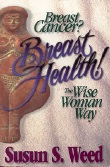
|
Breast Cancer? Breast Health!
Author: Susun S. Weed.
Foods, exercises, and attitudes to keep your breasts healthy. Supportive complimentary medicines to ease side-effects of surgery, radiation, chemotherapy, or tamoxifen. Foreword by Christiane Northrup, M.D. 380 pages, index, illustrations.
Retails for $21.95
Order at: www.wisewomanbookshop.com
|
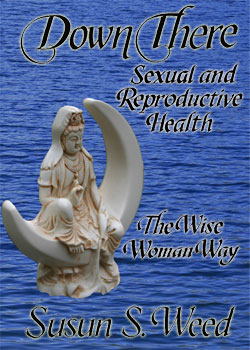
|
Down There: Sexual and Reproductive Health the Wise Woman Way
Publication date: June 21, 2011
Author: Susun S. Weed
Simple, successful, strategies cover the entire range of options -- from mainstream to radical -- to help you choose the best, and the safest, ways to optimize sexual and reproductive health.
Foreword: Aviva Romm, MD, midwife, 484 pages, Index, illustrations.
Retails for $29.95
Order at: www.wisewomanbookshop.com
|
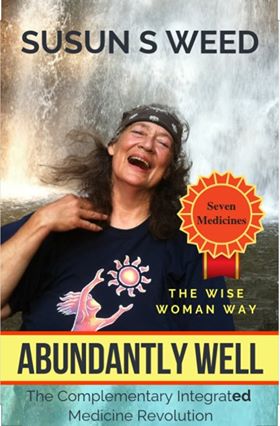
|
Abundantly Well - Seven Medicines
The Complementary Integrated Medical
Revolution
Publication date: December 2019
Author: Susun S. Weed
Seven Medicines build foundational health and guide you to the best health care when problems arise.
Includes case studies, recipes, exentsive references and resources. Introduction by Patch Adams illustrated by Durga
Yael Bernhard 352 pages, index, illustrations
Retails for $24.95
Order at: www.wisewomanbookshop.com
|
|
|
|
Wise Woman Herbal Ezine is sponsored by
www.susunweed.com and www.wisewomanbookshop.com
HEALING WISE | Q & A with SUSUN | GREEN BLESSINGS
THE LIBRARY | PEOPLE MAKING CHANGE | GODDESS ART GALLERY
©Susun
Weed -Wise Woman Center
~ Disclaimer & Privacy Policy ~
|




 Lady's slipper orchid (Cypripedium pubescens)
Lady's slipper orchid (Cypripedium pubescens)







